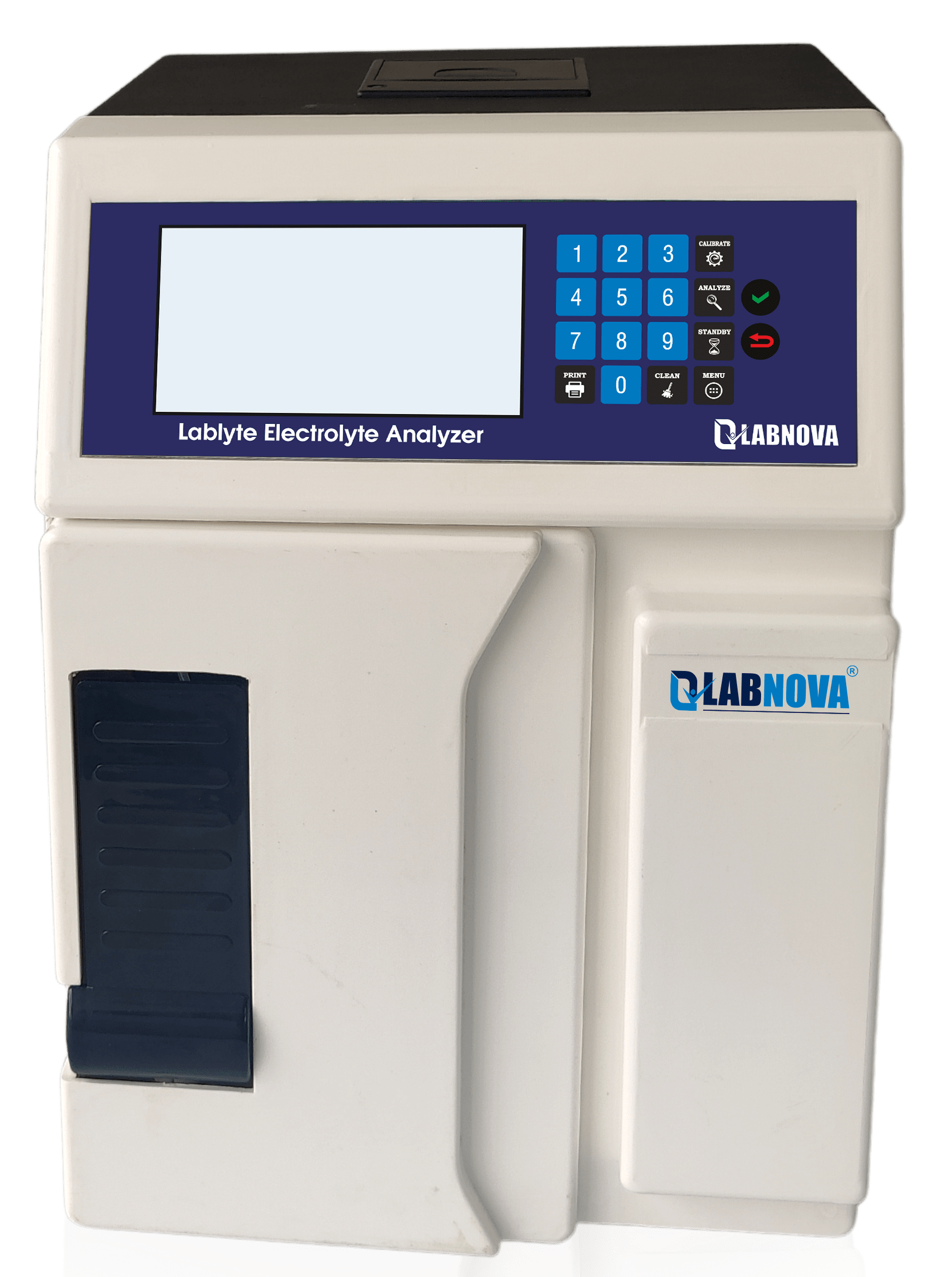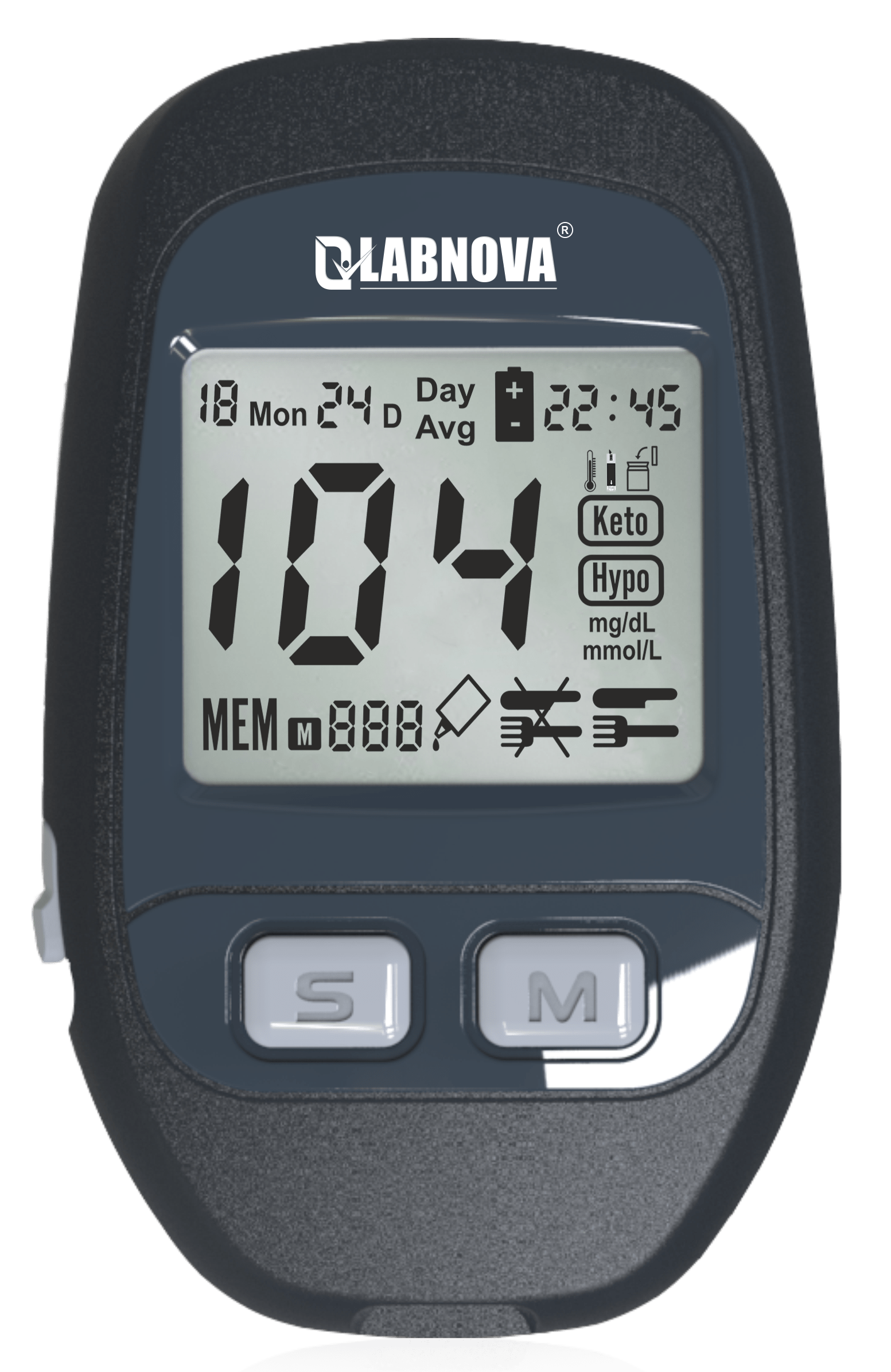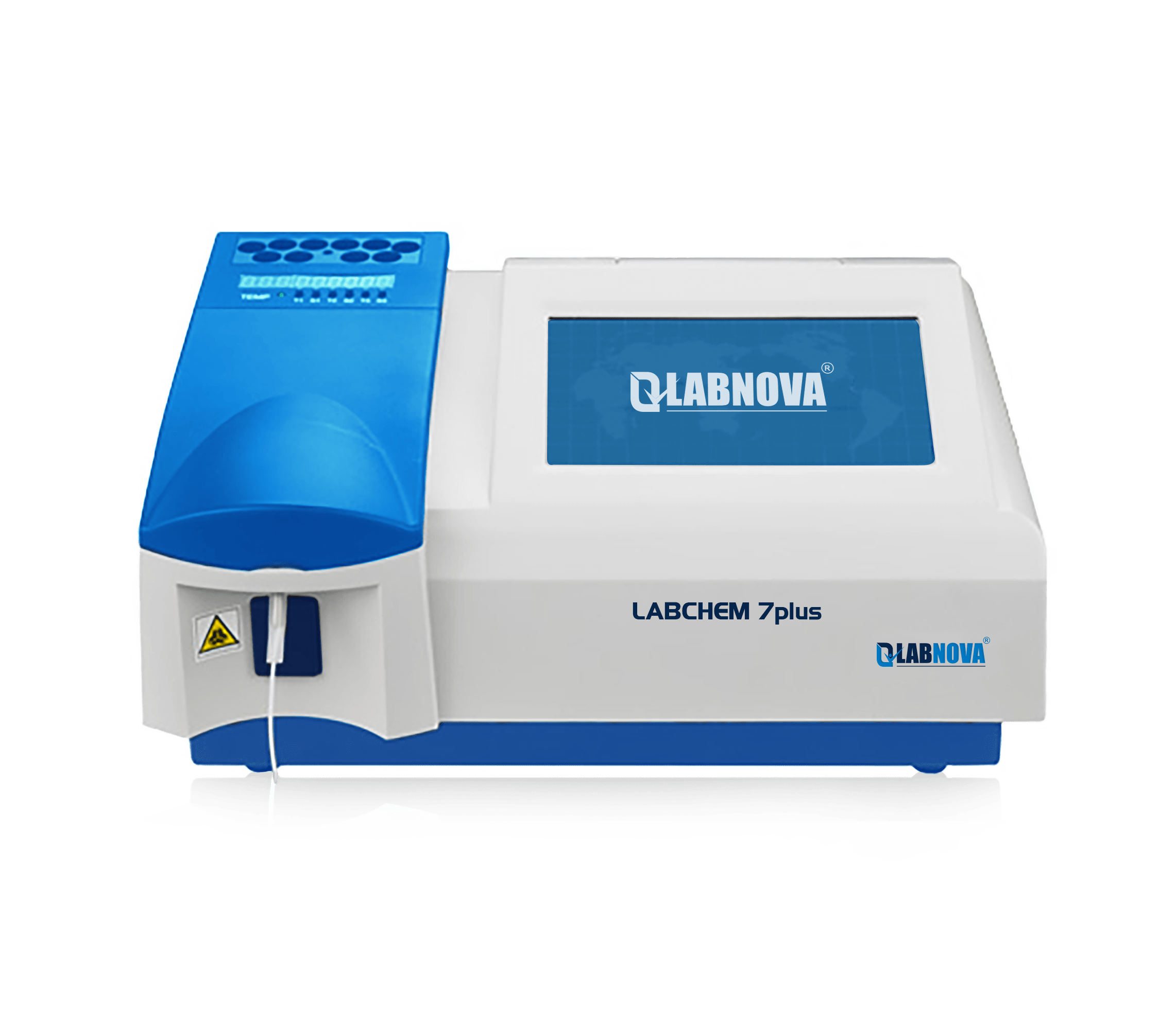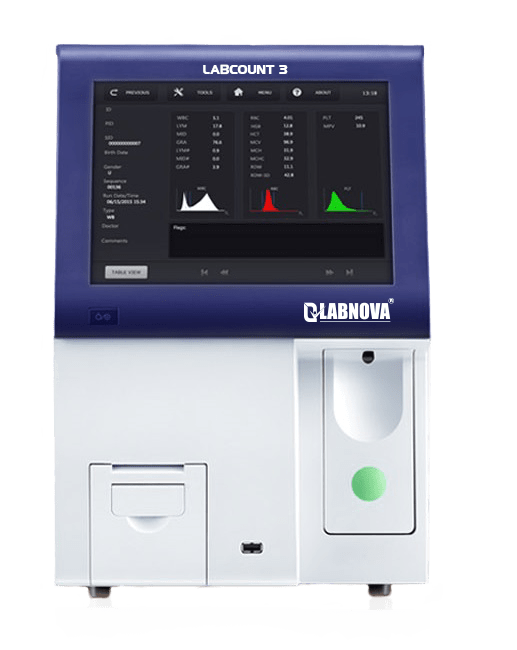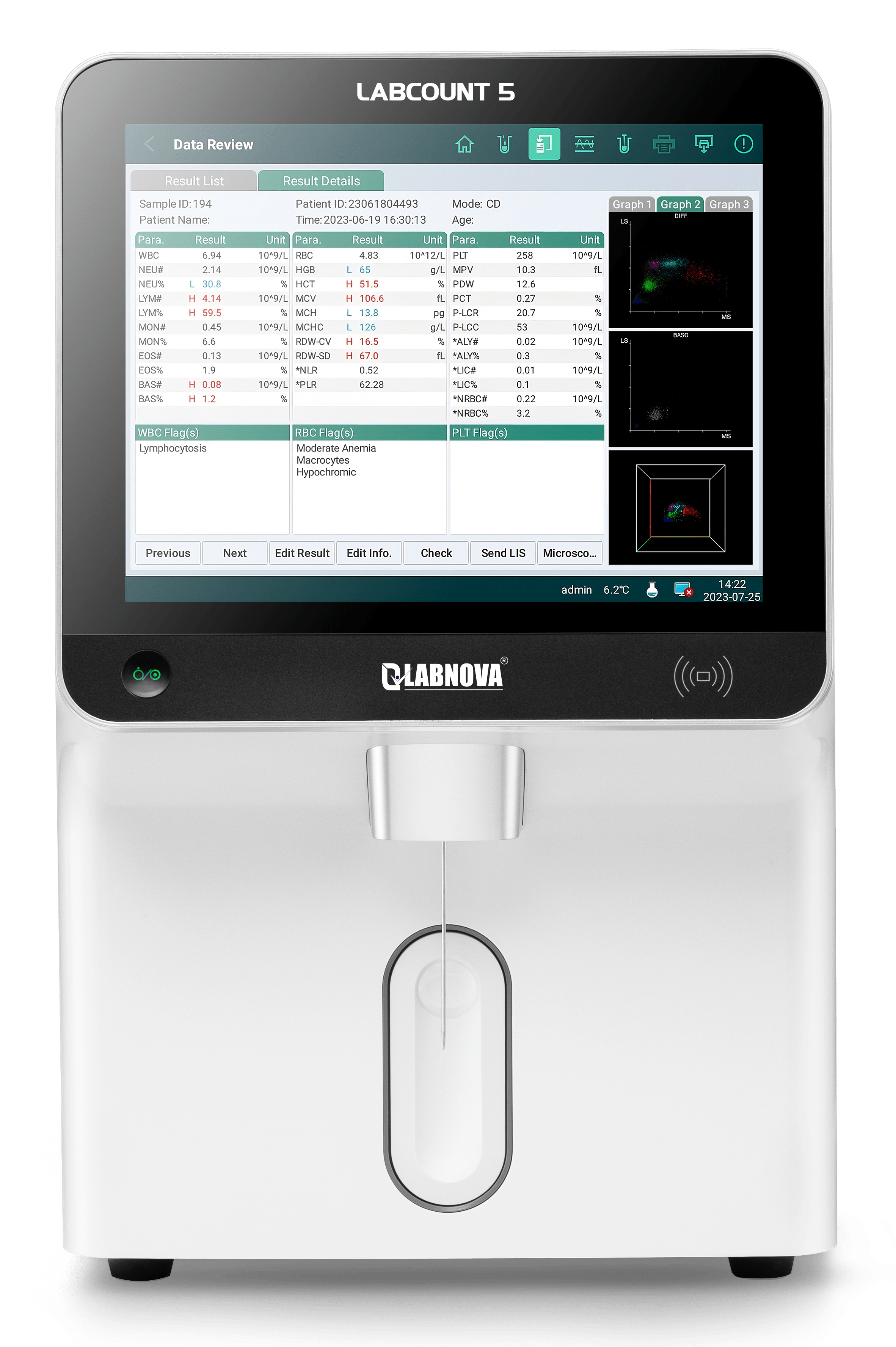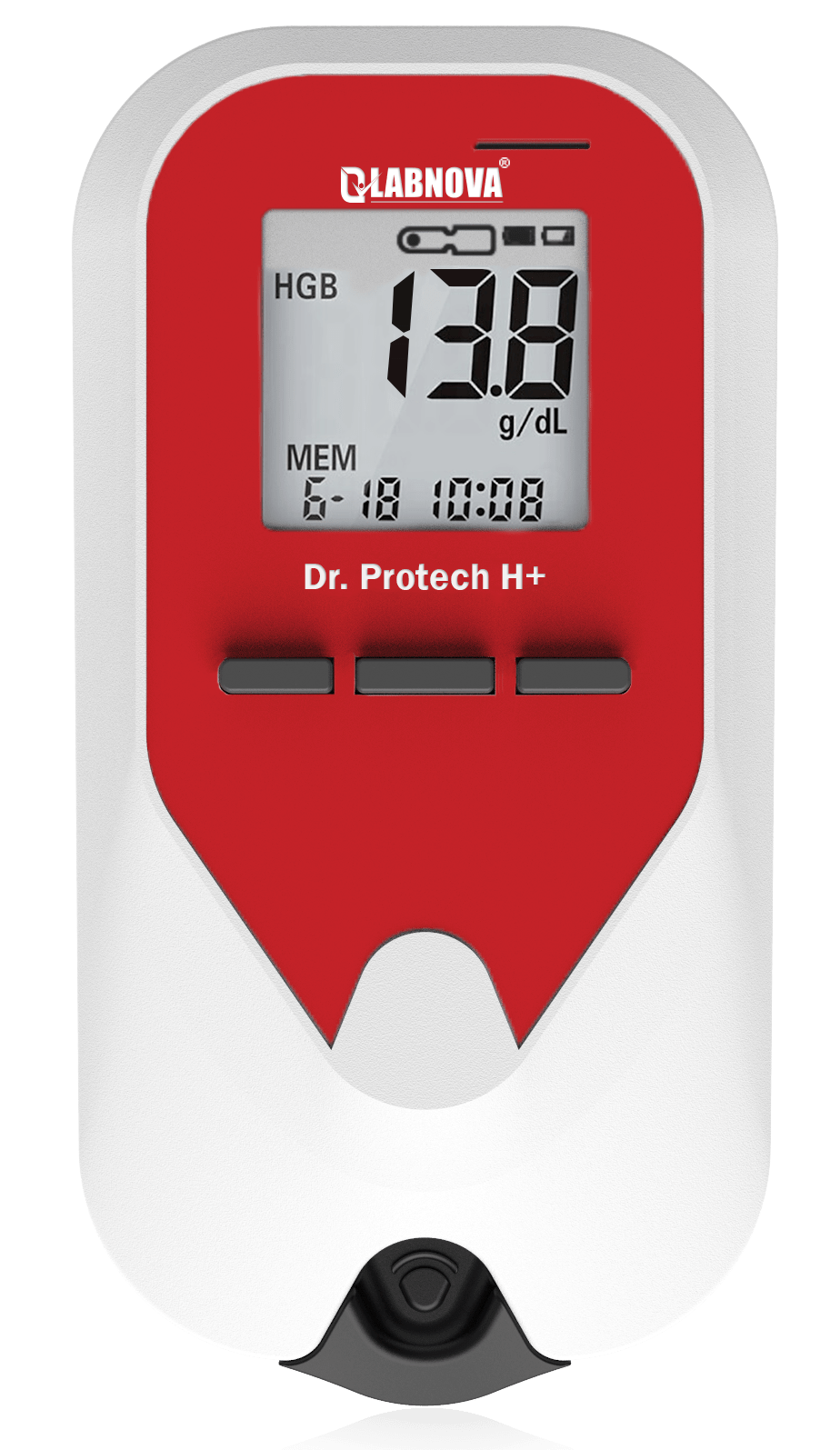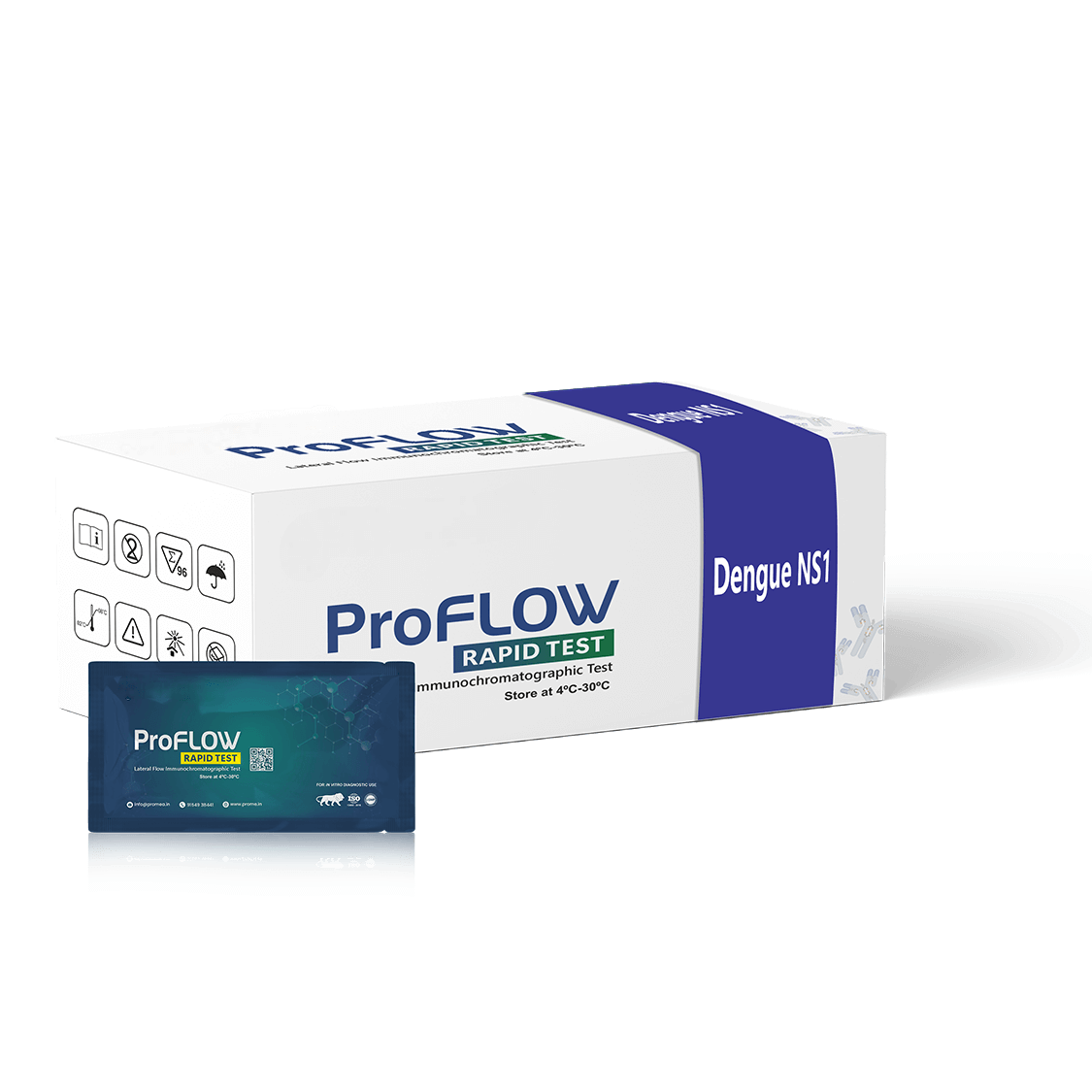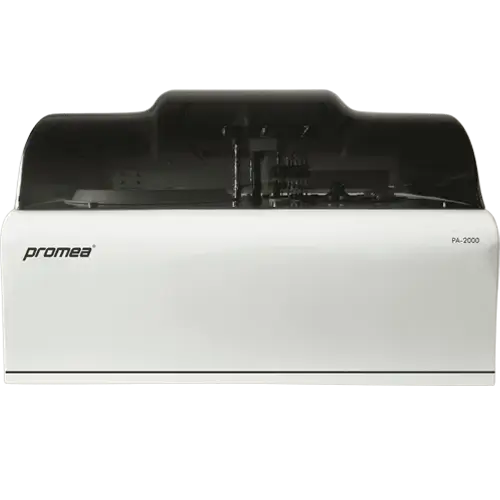
Clinical Chemistry Analyzer
Features
| Performance | Specification & Features |
|---|---|
| Sample: |
STAT Sampling Minimum sample Cup volume: 100µL Minimum Sample Volume: 2µL Sample cups, Hi cups and standard Round Test Tubes |
| Reaction Cuvettes: |
60 cuvette positions. Individual Cuvette Replacement Provision Reaction Cuvette Volume: 500µL Reaction Volume: Max 300µL and Min 180µL Intelligent Identification system to skip the faulty cuvette before test run Digitally Controlled reaction cuvette temperature at 37 °C |
| Reagent Carousel: |
Effective temperature control between 10 – 12°C Small and compact Reagent tray which can be stored in refrigerator |
| Reagent Positions | R1 & R2: 40 Position (combined) |
| Reagent Bottles: |
Small Pack size bottles to avoid deterioration R1: 18ml filling Volume R2: 5ml Filling Volume Dead Volume: 1ml |
| Sample Probe | Vertical & Horizontal Crash detection |
| On-board Laundry | 7 Step Cuvette washing with warm water |
| Stirrer | Variable Speed stirrer |
| OS | Windows Compatible with XP, Windows 8, 10 and 11 |
Discription
Throughput
This refers to the number of tests the analyzer can perform in a given time frame, usually measured in tests per hour. Throughput can vary widely depending on the model and size of the analyzer.
Test Menu
Clinical chemistry analyzers typically offer a wide range of tests, including basic metabolic panel (BMP), comprehensive metabolic panel (CMP), lipid panel, enzyme assays, hormone assays, and more. The specific tests available can vary between different analyzer models.
Assay Principles
Clinical chemistry analyzers employ different assay principles to measure analytes in samples. Common assay principles include photometry, potentiometry, ion-selective electrode (ISE), enzymatic methods, immunoassays (e.g., ELISA), and chromatography (e.g., HPLC).
Connectivity
Clinical chemistry analyzers may offer connectivity features such as integration with laboratory information systems (LIS), bidirectional interface with laboratory automation systems, and support for barcode scanning of samples and reagents.
Calibration
Clinical chemistry analyzers require regular calibration to ensure accurate and reliable results. Calibration methods may vary depending on the analyzer and the assays being performed.
Size and Footprint
The physical size and footprint of clinical chemistry analyzers can vary widely. Benchtop models are common in smaller laboratories, while larger floor-standing models may be suitable for high-volume testing facilities.

